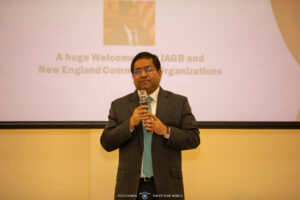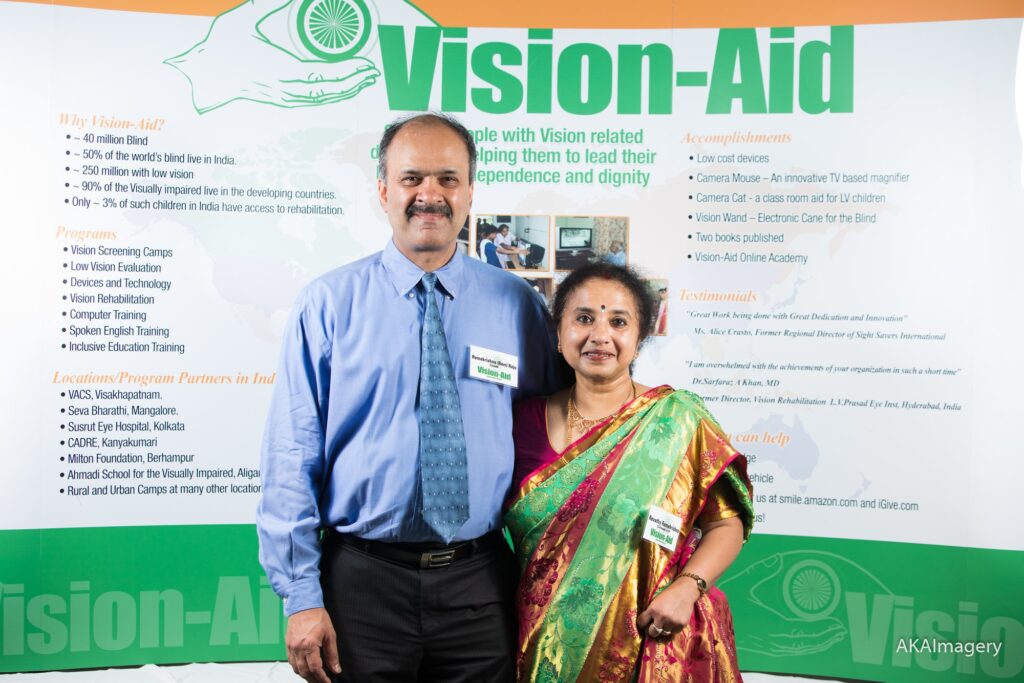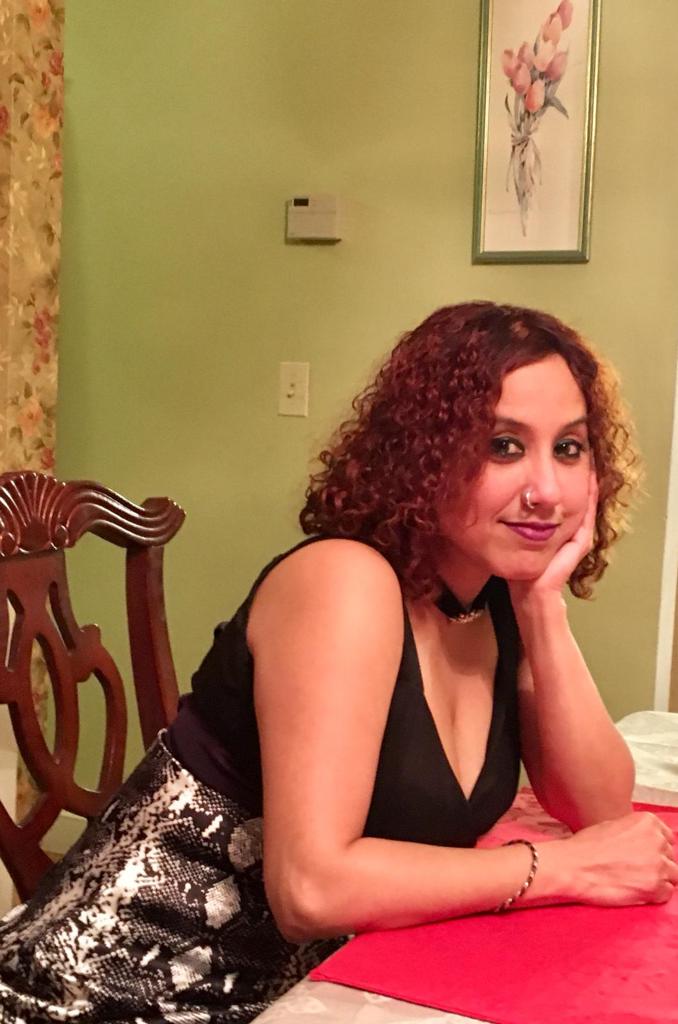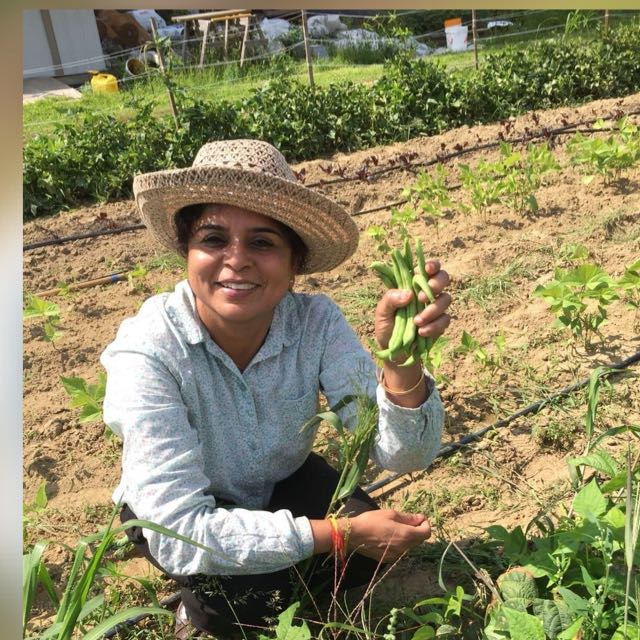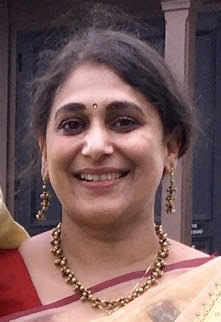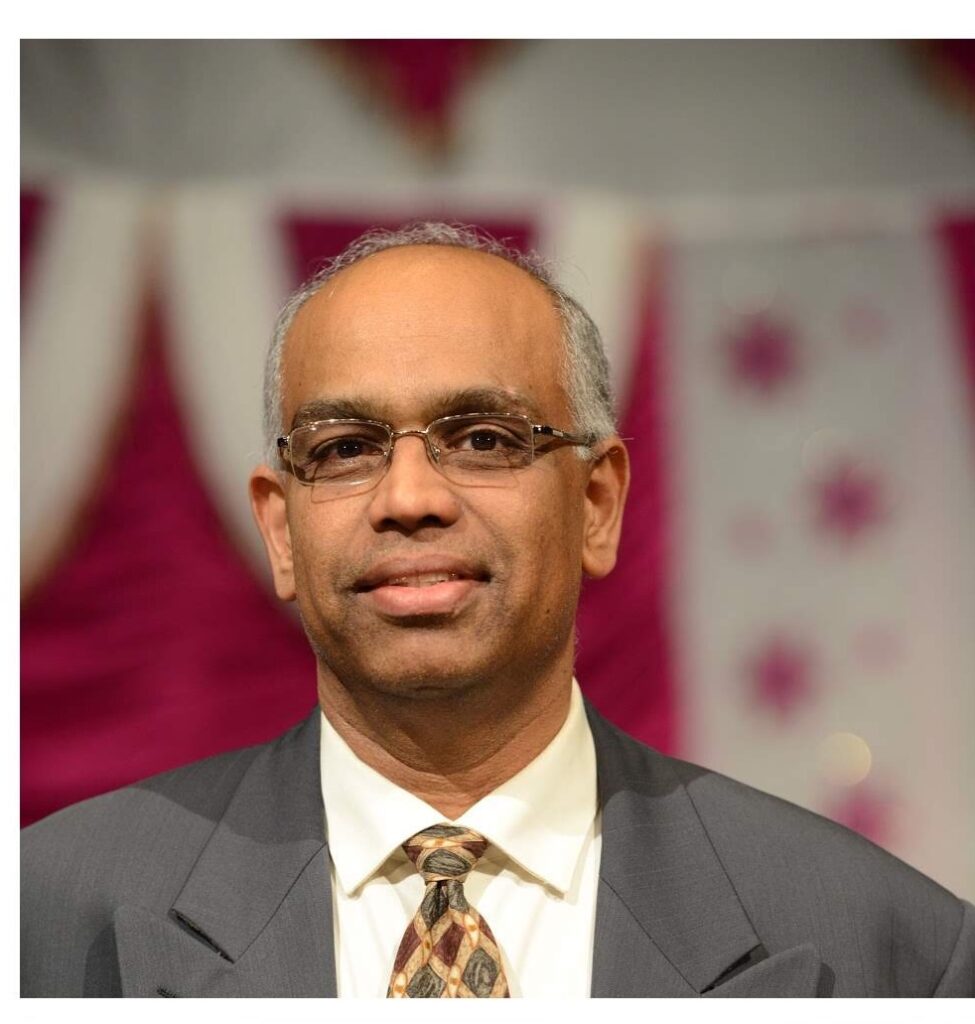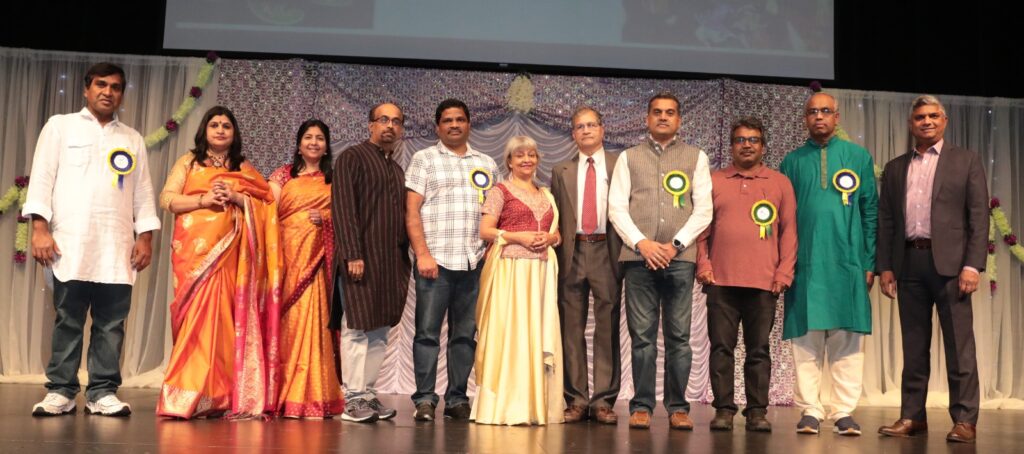Newsletter Sep 2020
Newsletter Posts

Hijras in India and the transgender community in the U.S.
Hijras in India and the transgender community in the U.S.
India’s hijras are male-to-female transgender individuals. Although they are called eunucåhs and are thought to include hermaphrodites (people with reproductive systems including both male and female elements) and those with indeterminate genitalia stemming from endocrine conditions, a physician in a Doordarshan interview indicated that he had examined 100 hijras and none had any of these reproductive abnormalities nor diagnosable endocrine issues. This physician indicated that each person examined was genetically a male but identified as a woman. The category of ‘hijra’ thus best maps on to the category of transgender women in America (males who become females).
Let us take a look at how hijras played a role in history. At the time of the Vedas, criminals were reportedly castrated. The resulting eunuchs were considered lower than untouchables. Then, in the Mahabharata, Pandava charioteer Shikhandi is referred to as a eunuch but seems to have been a transgender male; in most versions of the legend, he is born a female but eventually comes to identify as male. Given that he is biologically female and that one should not fight a woman (according to the dictates of the times), Shikhandi serves as a deterrent to Kaurava warriors like the eminent Bheeshma. On principle, Bheeshma refuses to fight Shikhandi, who acts as a human shield behind whom Arjuna shoots a volley of arrows, mortally wounding the functionally disarmed Bheeshma. Later in Indian history, Muslim rulers employed hijras in their harems. They were considered strong like men, and yet not a threat to women. After the Mughal court disbanded, the hijras occupied a strange niche— respected and yet marginalized.
Everyone who has grown up in India knows that India’s hijras have long been a marginalized community, who are discriminated against for employment and who, shunned by society, have banded together in their own tightly-knit communities. They support themselves economically by singing and dancing; they are often unwelcome at wedding at births but will insist upon performing (sometimes with minimal clothing on) and take money from families in exchange for going away. Without this and prostitution, they would be unable to survive. Families reject transitioning youths, who are viewed as bringing shame to the families; they are also bullied at school. Somehow the hijra community hears of them, or they reach out to the community, and end up running away from him with them. Families claim their kids have been kidnapped but rejected at home and welcomed by the hijras, their kids have found belonging and emotional sustenance. Stateside, I have worked with transgender men and women, and their stories are heartbreaking. They begin to feel trapped in the wrong body, and this brings on intensely negative feelings as they begin to hate themselves and their bodies. They identify with the other gender and long to be freed to dress and live like that other gender. They often feel suicidal in this time as they are in significant emotional distress. Eventually, the pendulum of gender identity swings to the point where they identify firmly with the opposite sex to their birth, begin dressing that way, and seek hormones and/or a sex- change operation, plus change their names. Two women and one man transitioned to the opposite gender in my seven years at my current job, and last week, a colleague emailed us to let us know that her son had transitioned and preferred a different name and different pronouns (she/they).
William Dalrymple’s brilliant book about New Delhi, “City of Djinns”, devotes several pages to his understanding of this marginalized yet unique and resilient community, and is recommended reading. There are also multiple YouTube videos illuminating the plight of the hijra community.
This past weekend’s virtual play, Mahesh Dattani’s Seven Steps around the Fire, directed by Subrata Das and with costumes by Jayanti Bandyopadhyay, was both superbly-executed and timely in that the fight for transgender rights in America continues to play out; while hijras have made some progress regarding their own rights in India, significant barriers remain. In both countries, ongoing discrimination persists despite legislative edicts, as attitudes reside in the hearts of people and laws cannot change that. I hope we can grow to understand and accept those different from us and afford them respect and human rights, both in legal terms and in practice.
–Rohit Chandra
Rohit Chandra is a child, adolescent and adult psychiatrist at Massachusetts General Hospital and Instructor in Psychiatry at Harvard Medical School.
Understanding the social context of Hijras in India
Understanding the social context of Hijras in India:A short synopsis
The discussion surrounding who is a Hijra necessitates comprehending the fundamental and nuanced discussion surrounding sex, gender, sexual orientation and lifestyle. Sex can be defined as the anatomical and biological differences between men and women (reproductive organs, chromosomes, hormones). Gender is the socially constructed difference between masculinity and femininity, which translates into what it means to live as a man and a woman (differences in the process of socialization, expectation, roles, responsibilities or stratification). Sex is assigned at birth based on visible physical characteristics and has conventionally been grouped into male, female or the intersexed. Technically speaking the intersex population are those whose sexual manifestations does not fit into the binary classification. In more developed nations of the world intersexed children often undergo surgery later on– consistent with one of the binary sex identifiers which has been assigned to them.
Gender is different from the physical definitions of sex. One might be born as a biological male but identify as a woman later on. This might then include transgender identities of being a trans man or a trans woman, medical procedures to undergo the transition, choices of lifestyle/ dressing up, or non-conformity to the binary categories. Outside of gender or sex based identities, it is important to remember that sexual orientation or emotional and physical attraction to members of a particular sex might or might not be determined by the set expectations of a heteronormative world and could include attraction to members of the same sex or homosexuality, both the sexes or bisexuality, attraction based on individual in isolation from their sexual identity or pansexuality, and even being asexual.
Traditionally associated with the intersexed, the hijras in India (official count close to 500,000), now include the transgender population—predominantly transwomen. Their sexual orientation can include attraction to members of the opposite or same sex (after their transition into trans-women) or other types specified. Hijra is a lifestyle signifying ritualistic presence during wedding and births, singing, dancing etc. Their kinship arrangement includes a guru-chela hierarchy. Unlike urban myths, the hijras do not recruit but members willingly join. The worship of Bahuchara devi is a common practice and Indian tradition traces their origin to the epics of Ramayana and Mahabharata. Currently the community provides food, shelter and livelihood for those ousted from their home– since for many, living as a trans woman might not be an option.
Prosecuted by the system and misunderstood by society.
–Tanni Chaudhuri
Citations
-
Alizai, A., Doneys, P., & Doane, D. L. (2017). Impact of Gender Binarism on Hijras’ Life Course and Their Access to Fundamental Human Rights in Pakistan. Journal of Homosexuality, 64(9), 1214–1240.
-
Kang(2014). India’s census counts transgender population for first time.GLADD. retrieved from https://www.glaad.org/blog/indias-census-counts-transgender-population-first-time
-
Kendall, D. (2015). Sociology in our Times. Stamford, USA : Cengage
-
Mount, L. (2016). Hierarchy, Human Rights and the Criminalization of Hijras in South India. Conference Papers — American Sociological Association, 1–21.
-
Nanda, S. (1998). CHAPTER 12: The Hijras of India: Cultural and Individual Dimensions of an Institutionalized Third Gender Role. In Culture, Society & Sexuality (pp. 226–238).
-
Nagarajan (2014). First count of third gender in census. Times of India. Retrieved from http://timesofindia.indiatimes.com/articleshow/35741613.cms?utm_ source=contentofinterest&utm_medium=text&utm_campaign=cppst
-
(2020).What’s intersex?. Planned parenthood. Retrieved from https://www.plannedparenthood.org/learn /gender-identity/sex-gender-identity /whatsintersex#:~:text=Intersex%20is%20a%20general%20term,male%E2%80%9D%20or%20%E2%80%9Cfemale%E2%80%9D.
-
(2014). India recognizes transgender people as third gender. The Gurdian. Retrieved from https://www.theguardian.com/world/2014/apr/15/india-recognises-transgender-people-third-gender
Tanni Chaudhuri is an Associate professor of sociology and graduate director at Rhode Island College
Seven Steps around the Fire
Seven Steps around the Fire
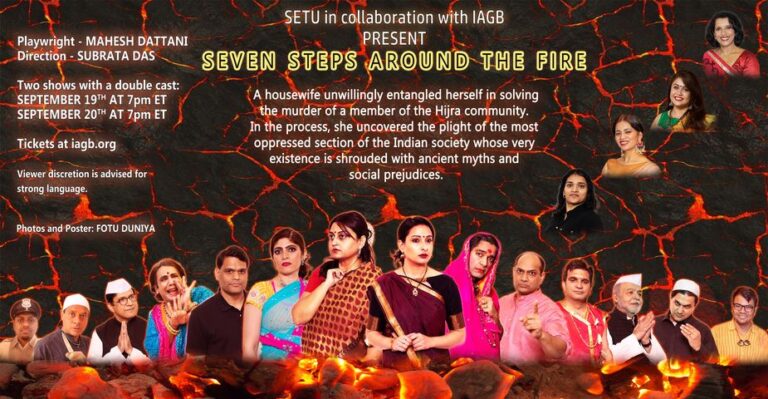
SETU virtually stages a murder mystery for IAGB Cares Relief Fund: $6500 raised
–Yogita Miharia
SETU and IAGB, with many common and complimentary missions, joined hands to bring an Indian-origin play in English through virtual presentations on September 19 and 20. About 500 people from around the world watched the production live from their living rooms.
In these tough times, in order to serve the underprivileged and to bring entertainment to the community, IAGB in collaboration with SETU, brought a thought provoking and intense play, a murder mystery, to all theater lovers as they raised funds for food pantries and shelters. We are thrilled to report that IAGB raised $6500 from this joint effort.
SETU’s production of “Seven Steps around the Fire” by the renowned playwright Mahesh Dattani was staged live but in a virtual environment that the audience could enjoy from the comfort of their homes. Seven Steps around the Fire is a timely play in that the fight for transgender right in America continues to play out and, while the “hijras” have made some progress regarding their own rights in India, significant barriers remain. In both countries, ongoing discrimination persists despite these legislative edicts.
SETU’s mission is to build bridges, connect cultures and bring social messages to the audience, while IAGB’s mission is to serve the community. These 2 organizations came together to make an even bigger impact. We are very grateful to our Platinum Sponsors – Anil and Shweta Agarwal, Rohit Chandra and all our donors, for supporting the arts and making a social impact at the same time.
Our heartfelt thanks to the cast and crew of this production:
Anil Matta, Anu Sharma, Ashok Shetty, Bhavesh Sharma, Chadra Saujanya, Chandrala Malkood, Dipali Trivedi, Ganesh Davuluri, Janique Choux Das, Jayanti Bandyopadhyay, Kedar Chaudhary, Ketan Dave, Krishan Aneja, Mahesh Palriwala, Nagendra Rao, Nikhil Bhatia, Nirmal Kumar, Noorain Buxamusa, Pradeep Jayachandran, Ravi Nimmagadda, Sanjay Gowda, Sanjay Kudrimoti, Sridhar Pola, Srihas Sampath, Subrata Das, Sugandha Gopal, Sumalita Bhuyan, Sundar Sivaraman, Tanni Chaudhuri, Vaishali Gade, Yogita Miharia.
To understand and learn more about the hijra community, read these very insightful articles written by SETU’s members. They both have worked with the transgender community in their own capacities:
-
“Understanding the social context of Hijras in India: A short synopsis”, by Tanni Chaudhuri, Associate professor of sociology and graduate director, Rhode Island College
-
“Hijras in India and the transgender community in the U.S.”, by Rohit Chandra, a child, adolescent and adult psychiatrist at Massachusetts General Hospital and Instructor in Psychiatry at Harvard Medical School
Boston community welcomes CGNY
BOSTON Community Welcomes CGNY
IAGB and Boston community welcomes Consul General of India, New York Shri. Randhir Jaiswal
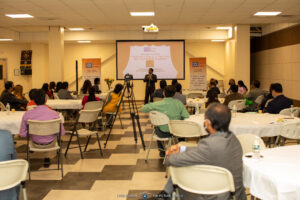
“India is a land of Knowledge, thought, introspection, spirituality, human progress, civilization wealth and this city of Boston is also a city of knowledge – counted as foremost in the world.” – CGNY Shri. Randhir Jaiswal
Randhir Jaiswal is a 1998 Indian Foreign Service officer and career diplomat. He assumed charge as Consul General of India in New York on July 19th. Prior to that, he served as Joint Secretary cum Social Secretary to the President of India since August 2017. In this role, Randhir Jaiswal headed the foreign affairs office of the Rashtrapati Bhavan and advised the President on India’s foreign policy. In his over two decades of diplomatic career so far, he has served in Portugal, Cuba, South Africa and at the Permanent Mission of India in New York. He served in New Delhi at the Ministry of External Affairs, first as Deputy Secretary looking after India’s relations with the US, and then as Joint Secretary managing India’s relations with West European countries.
Sanjay Gowda, IAGB President introduced Randhir Jaiswal. Mr. Gowda specifically thanked Hon’ble Consul General for planning the visit even during this challenging time. He expressed that “IAGB has been working very closely with the consulate office, and looks forward to strengthening the partnership and collaborating with engaging relationships to serve the Indian Diaspora in the New England region”
Randhir Jaiswal, in his remarks thanked the community for the warm welcome. He drew the parallel nature of Boston and India in terms of “India is a land of Knowledge, thought, introspection, spirituality, human progress, civilization wealth and this city of Boston is also a city of knowledge – counted as foremost in the world.” He informed the community that all of the services provided by the consulate are back to normal and said he looked forward to collaborate with the community in extending the services and welcomed new ideas to make the experience enriching for all thus making India US friendship truly delightful and inspirational.
Given the current conditions due to COVID-19, the welcome reception was limited by invitation only and this invitation was extended only to representatives of Indian American community organizations around Boston area. State recommended health and COVID-19 safety measures were observed at this event. New England Shirdi Sai Parivaar (NESSP) was gracious to host the event in the banquet hall at Sai Temple in Groton, MA. Shri. Jaiswal was accompanied by his wife Smt. Abha Jaiswal and their two teenage daughters.
Vaishali Gade in her opening remarks extended a warm welcome to all attendees and introduced each of the attendees and welcomed them to share information about their respective organization to CGNY and briefly explaining their charter and activities. The following were the attendees who spoke – Srinivas Gondi of Blackstone Valley India Society (BVIS); Ramakrishna Penumarthy, Sudha Mulpur from Telugu Assoc. Of Greater Boston (TAGB); Manoj Pillai of New England Malayalee Association (NEMA); Santosh Salvi from New England Marathi Mandal (NEMM); Sridhar Gorantla of North America Telugu Society (NATS) Boston Chapter; Balaji Radakrishnan of India Association of NH (IANH); Sivakumar Mallaiyasamy of Tamil Makkal Mandram (TMM); Deba Behera & Manabesh Dash of Orissa Society of New England (OSNE); Mohan Nannapaneni, Shankar Magapu representing Team Aid; Preetesh Shrivastava President of Hindi Manch; Subba Raju Datla of Sewa International; Aditi Soni, President of United India Association of New England (UIANE); Sharat Amin from India Society of Worcester (ISW); Revathy Ramakrishna, Co-founder of Vision Aid; Nilesh Agrawal from Shishu Bharati School; Anil Saigal of Lokvani, Kanchan Banerjee of Boston Center of Excellence (BoCE) and Parmit Maakoday of International Region at Computer Society of India (IRCSI) and Latha Mangipudi- Member of New Hampshire House of State Representatives from district 35.
Harsha Seshanna in his vote of thanks reiterated IAGB’s commitment to work with Consul General as part of our civic duty and thanked all the representatives of the community organizations present there for their enthusiastic participation. IAGB, the Boston community and Consul General all are enthusiastic about this new chapter and are looking forward to work and serve the community in earnest.
–Sanjay Kudrimoti
IAGB Spotlight Ram Raju and Revathy Ramakrishna
IAGB SPOTLIGHT
IAGB SPOTLIGHT – Vision-Aid Co-founders, Ram Raju and Revathy Ramakrishna
“What can’t be cured has to be endured. Vision-Aid aims to build this endurance.”
IAGB: IAGB welcomes Ramakrishna (Ram) Raju and Revathy Ramakrishna, Co-founders of Vision-Aid Inc. Please share with our readers your life’s journey. Where was your upbringing, your biggest influences and how did you meet each other?
Revathy: I was born in Chennai but spent most of my early life in Ranchi, Bihar. My father, a highly respected Mechanical Engineer, retired as a Director from MECON and his tireless work on Coke Oven projects in almost every major Steel Plant in India was an inspiration. My mother, a retired schoolteacher, was loved not just by her students but by anyone who met her. Both my parents were extremely hard working and service oriented. It is they who inculcated the spirit of service in me right from my childhood. My parents used to provide hot meals and clothing to the poor. My father still personally serves food at the Leper colony. They are very charitable in their outlook and always ready to help. I have a younger brother who lives in Bangalore, India. I am fortunate to come from musically gifted family and was blessed with talent and inspiration all around me. I picked up singing at a very early age and that is how I met Ram who used to play the guitar in our engineering college music club.
Ram: I was born in Bangalore. My dad is a distinguished alumnus from the 2nd batch of IIT Kharagpur. He came from a modest family and not only went there on a merit scholarship but saved some of his scholarship money to send it back home so his siblings could also go to college. He was a creative and forward-thinking successful entrepreneur. My instincts for new ideas and new initiatives is a gift from him. After retirement, he has spent the last 16 years as a volunteer President at Vision-Aid India. My mother was also a schoolteacher and I draw my passion for education from her. I grew up in Kolkata and went to college at Birla Institute of Technology, Mesra where I met Revathy. After graduation, we worked in IT Services Division of Tata Steel, Jamshedpur for seven golden years. Ramya, our daughter was born then. Even though we had a very comfortable life, I started to grow restless and explored ways to grow. I was selected by the Rotary Club Foundation from Bihar for a scholarship-based master’s program in Computer Science & Engineering at Penn State University. Revathy stayed back working full time and taking care of Ramya for those two years. After my graduation, they both joined me here in Lexington just as I started working here. One of my sisters lives in Lexington too and the other sister is a doctor practicing medicine in Vizag, India.
IAGB: Besides Vision-Aid, have you been associated with other volunteering work?
Ram: Revathy volunteered as a teacher at Shishu Bharti. A born Tamilian, she taught Hindi for twelve years because of her fluency and love for Hindi. Additionally, she was an active volunteer in Indian Americans for Lexington (IAL).
Revathy: Ram was involved with meditation from very early on and has volunteered in organizing several meditation retreats. He is part of Association of Meditators in Greater Boston and through that they run courses in meditation locally. We open up our home weekly for Vipassana meditation sittings. Vipassana meditation started with Gautama, the Buddha and now it is offered freely in over 200 meditation centers that were established by Shri. S.N. Goenka throughout the world. More information regarding this can be found at www.dhamma.org
IAGB: What was your inspiration to start Vision-Aid? How did ‘Vision’ become the focus of your philanthropic service?
Ram: Not everyone is aware but I myself have significant visual impairment. I started losing my vision at the age of seven as I was afflicted by optic nerve atrophy. So, while this loss of ‘full and complete’ vision has been a setback, I have also had many blessings. Academically, I have earned two Masters degrees from reputed U.S universities and have been blessed with a satisfying and successful professional career, so I am very grateful for the life I have been given and have no complaints. My close and personal encounter with vision impairment got me thinking about what I can do to give back to people suffering from loss of vision, especially in places like India where good services and opportunities are underdeveloped.
When we began this venture, we had no idea that this will grow into an NGO with multiple centers serving the visually impaired. We started with one center in my hometown Vizag. My dad had just entered his retirement years and with his help and our limited personal funds, we opened our first center in 2004.
Revathy: We established Vision-Aid as a 501(c)3 organization in 2005. At this time, we got some of our friends involved who joined us as our first board members and contributed to Vision-Aid’s growth. As time progressed, some more individuals and other NGOs got interested in our work and gave some grants and donations to sustain and grow Vision-Aid services in India. In 2008, we had our first successful public fund raiser event in Lexington. From then onwards there was no looking back and every year the fundraising events (dance shows) just kept getting bigger and bigger. Not only did the shows get bigger, but the cause started attracting the support of many generous philanthropists. This growth in fundraising really helped us and today we have twelve centers in India. Additionally, some of these centers have grown significantly in terms of providing several new services. We have different levels of centers. Three of our centers are “Tertiary Level National Resource Centers” offering a range of advanced services.
IAGB: What kinds of services do Vision-Aid Centers offer to the people in need?
Ram: The services offered fall into three categories – Enable, Educate and Empower. Programs which enable persons with low vision offer a comprehensive low vision evaluation for infants, children and adults, and provide them with optical and electronic magnification devices. Patients who are blind, are provided with training depending upon their needs such as orientation and mobility which teaches navigation techniques to walk and move around safely. Additionally, the centers provide skills training such as computer applications, mobile technologies, spoken English and advanced courses to name a few and more skills training are being added on a continuous basis. [Please refer to the graphic below for all the programs provided].
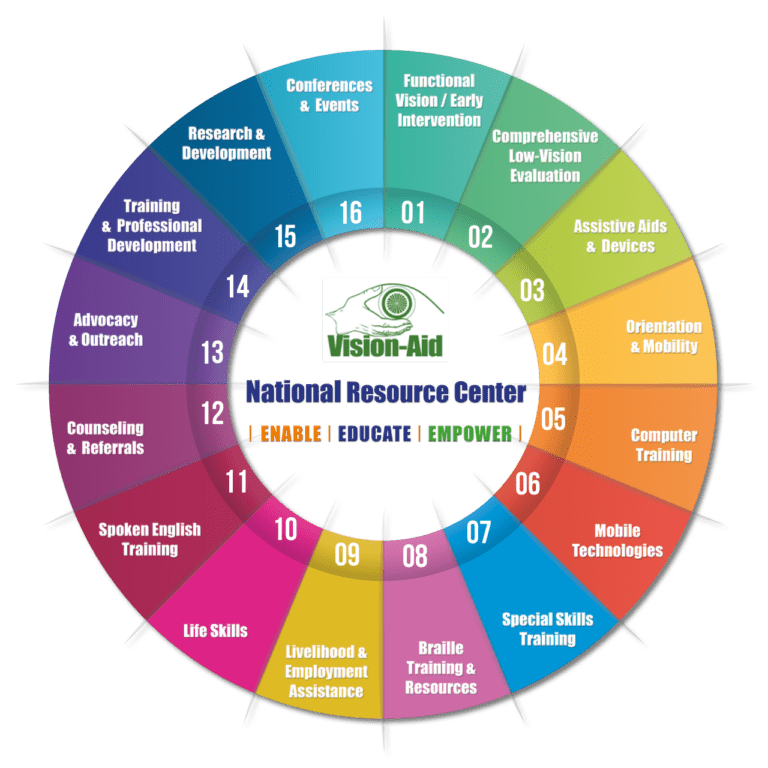
Revathy: Most importantly Vision-Aid is working with the subset of population that has incurable vision problems. At the start of this journey, we interviewed many optometrists and ophthalmologists in Vizag. During these conversations we were shocked to learn about the plight of the people with incurable vision impairment, who were being turned away from most eye hospitals and clinics without any further recourse. Their problems cannot be corrected by surgery or modern medicine. What cannot be cured has to be endured. Vision-Aid helps to build this endurance. In summary, Vision-Aid’s programs offer vision rehabilitation program for people with incurable vision problems and through these training programs they learn to live an independent life and as contributing members of the society. Unfortunately, India is amongst the countries with highest number of blind and visually impaired. There are myriad reasons for this such as economics, poor nutrition, genetics and consanguineous marriages. By rehabilitating one visually impaired individual with employable skills and helping them to lead a meaningful life, we help the entire family of that individual. The whole family is energized because it unburdens the caregivers both economically and emotionally.
IAGB: Who all can avail these services? Is it open only for poor people or anyone can avail?
Ram: Mostly people at the lower end of the economic strata visit our centers, but we do not turn away the people who can afford it. It is just that the grants are used to cover the underprivileged people. We partner with major eye hospitals in India such as Sankara Nethralaya (Chennai), Aravind Eye Hospital (Madurai), Shroff Charitable Eye Hospital (New Delhi). All these hospitals provide services to the well off and the poor equitably. We follow a similar model. Those who are able to pay are charged a nominal cost for the services and those who cannot we offer our services and devices free of cost. This model helps towards the sustainability of these centers.
IAGB: How does Vision-Aid staff its organization and Centers?
Revathy: All personnel in US are 100% volunteers and we have no paid staff here. In India, we have a mix of volunteers and paid staff. For all the critical services, we have paid staff. In 2020, we will have a footprint of around 40 paid staff, both full time and part time, who work under the guidance of our amazing India Leadership Team. Their job roles range from program managers to trainers. In addition to these we have about 140 dedicated volunteers. Beyond this, our grants help to fund several staff members at partner organizations. Nonclinical and mission noncritical work is outsourced to volunteers. A large percentage of our paid staff are visually impaired themselves. Some of these have been our own trainees. We try and hire the visually impaired wherever possible.
IAGB: What is the structure of Vision-Aid organization?
Ram: Mr. Puran Dang is the Chairman of Vision-Aid. Today Vision-Aid’s ownership rests with the Board of Directors who are elected every year. Presently we have fifteen members on the board. Within the Board we have officers – President, Vice President, Executive Director, Treasurer, and Assistant Treasurer. Our first President was Mr. Paramesh Garimella, followed by Mrs. Anu Chitrapu, and now our current President is Mr. Syed Ali Rizvi. Additionally, we have an advisory board which has eight members. Starting this year, we added Council of Ambassador with three amazing leaders. So overall we have 28 members in the leadership team and each of us have a role and responsibility to play and execute tasks. Even though only some of them have been named here, each one is amazing in their own right and we wish we could name them all. The recruitment happens largely through word of mouth and through referrals from existing members. And in alignment with the cause, eight members of our leadership team are either optometrists, ophthalmologists, or occupational therapists. They help, advise, and guide us. The Board meets once every two months.
Revathy: We term it as a Vision-Aid family. The Board has always been harmonious, and everyone is empathetic to the cause. I believe the cause makes everyone humble and motivates all to give their best in form of money, time and talent. Every President and the Board have taken Vision-Aid to the next level and our Chairman, Mr. Puran Dang, offers his invaluable support and guidance at every step.
IAGB: How many fundraiser events does Vision-Aid organize in a year?
Revathy: Presently, we have only one fund raiser event every year. Our first ever Dance production fund raiser event was produced by Ranjani Saigal. From there, Jeyanthi Ghatraju, who is now Co-Chair of Vision-Aid Council of Ambassadors also joined hands and helped to take Vision-Aid fundraisers to new heights. Jeyanthi Ghatraju is also a current IAGB Director. The dance community in Boston area has been amazing in bringing both talent and ingenuity to the productions each year. We are also very grateful to have the support of other Artistic Directors such as Sujatha Meyyappan, Sripriya Natarajan Moorthy, Thenu Raajan, Kalpana Balachundhar, Marishakthi Muthuswamy, Hema Iyengar and few others along the way who have been a constant presence in these productions, and all have worked cohesively under the talented choreographer, Madurai R. Muralidharan. We have about sixty dancers from different dance schools, who set aside their individual styles and come together for a unified show. The dance community is not just the dancers, but we are grateful to their entire family and friends for becoming our well-wishers.
IAGB: What are the near term and far term goals for Vision-Aid? What are your plans for further expansion?
Revathy: Our goal is to partner with every major eye hospital and blind school in India and later in other countries including the United States. The partnership will result in the creation of several Vision-Aid Resource Centers that offer a range of services to the visually impaired.
Ram: Over the past 15 years, through our learning and experience, we have developed a comprehensive model for vision rehabilitation and now it is a question of rolling out this model to as many places as we can, while continuing to refine it as needed. As we mobilize more funds, we should be able to execute this next phase in a scalable and efficient manner. We are so gratified to see many individuals who are coming forward to help us create Vision-Aid centers. On our website we have different levels of giving, and so for a commitment of just $10,000 a year for five years we can start a new Vision-Aid center at a new location at a primary level and higher amounts for secondary and tertiary level centers. So, the real long-term dream is to expand Vision-Aid centers globally including someday, one right here in Boston. Also, someday, we would like to have chapters of Vision-Aid spread across the US and multiple countries. We are so happy that many find it in their hearts to support this cause and on our part, we will do our best to make good use of every dollar and every resource volunteered to the best extent possible.
Revathy Ramakrishna works as Program Manager, Government Initiatives at Fresenius Medical Care of N.A. She was recognized as the Woman of the Year 2019 by India New England for her work and dedication to the cause of Vision-Aid .
Ramakrishna (Ram) Raju works as a senior technical architect for a global technology services firm. He was honored by Harvard University with the Derek Bok Public Service Prize for 2019 for his work on Vision-Aid. Raju was also awarded the Making a Difference Award by Children’s Hope of India, an NGO based in New York, for his work on Vision-Aid.
For more information about Vision-Aid, visit www.visionaid.org The Vision-Aid Online Academy can be found at www.training.visionaid.org
For IAGB Team – Sanjay Kudrimoti
India Day 2020
India Day 2020
India Day 2020: A unique, original and memorable celebration of India’s Independence Day amidst the pandemic
– Nagendra Rao
A couple of months after the pandemic began, the IAGB team was tasked with the challenge of celebrating India Day with so many constraints that came up. In addition to the unavailability of a grand platform like City Hall at Boston, the inevitable thought dawned on us that we would have to celebrate the event virtually. Further, the team wanted to do something really relevant for the community. A series of events were conceived by IAGB leading up to a grand event on August 15th.
IAGB Director Lata Rao organized a Learning series “India’s journey to Independence” in association with Shishu Bharati, which was conducted over a 6-week period where young audiences learnt about India’s freedom struggle. This was attended by over 100 kids. IAGB felt the need to educate and create awareness of the Indian culture amongst the general public about common misconceptions that they may have about India or Indian-Americans in general. IAGB Director Sushil Motwani and VP Vaishali Gade began an Awareness Series where the community was invited to publish articles regarding Indian leaders, religion, food, language and similar topics to be published in local journals and media. Yogita Miharia, IAGB Director, conceived and organized a fun series featuring 10 standup comedy artists from all over the country. These comedy shows added color to the schedule of events along with catering to the youth’s interests. This was just the beginning of new and unique undertakings on IAGB’s part. They were all precursors to a grand event planned for the Independence Day. The team decided that they would do something truly unique on the ground and in the virtual world.
A dedicated team of IAGB volunteers led by Directors Tanu Basu and Jeyanthi Ghatraju started planning a hitherto never attempted initiative in New England in March 2020. They started talking to 35+ towns requesting them to help in the celebration of the Indian Independence Day during August 2020. They met in planned synchronism with town officials, Mayors, Town Managers organizing online discussions, meeting town officials and talking to them about India and the Independence Day. IAGB wanted towns to proclaim 15th August as India Day and hoist the Indian tricolor in their towns in small socially distanced ceremonies.
You can appreciate how much effort went into this initiative. Flag poles had to be made available. Towns had to meet and give permission. Flags were to be purchased and made available and handled with care. Volunteers had to meet at the scheduled times and conduct the event properly and safely in this pandemic situation. It all happened smoothly and the Indian diaspora got to see on Facebook how the tricolor fluttered bravely on 8/14 and 8/15. Mayors, town officials gathered and attended the meetings and read out the proclamations. It was a proud moment for Indians in New England and IAGB.
Many people attended the event in the local towns and communities and affirmed their home country’s pride and honor in the United States. Faced by the COVID pandemic, IAGB was unable to plan major gatherings like the previous years in central Boston.
Further, in the evening on the Independence Day, a grand virtual program was held on YouTube where there were two major performances and also, felicitations by US and Indian dignitaries. The who’s who in New England came together online and felicitated the Indian community on India Day and encouraged the American-Indian communities to work together on important issues and participate in governance, and build the bonds between India and America even stronger. The highlight of the evening were two performances, a wonderful dance production called “Tad Bharatam, That! is India” was presented by the famous dance do Nirupama and Rajendra and, a One India Concert by the celebrity singer Vijay Prakash of “Jai Ho” fame. This concert was presented by the Nightingale of New England, Anuradha Palakurthi who sang with Vijay Prakash. There were 15+ songs in 10 different languages showcasing the diversity and rich culture of India.
The US officials who were present at the virtual event from Massachusetts were Governor Charlie Baker, US Senator Edward Markey, Senate President Karen E. Spilka and Congressman Joe Kennedy. There was a message from the Indian Minister of Culture and Tourism GOI – Prahlad Singh Patel. The Consul General of India in New York, Sh. Randhir Jaiswal spoke on the occasion, greeted the Indian American community and praised the efforts on IAGB in bringing the community together with useful events in such trying times.
IAGB was supported by 15+ regional Indian organizations in this effort. We would like to thank our members, local organizations who stood up to help us and all the donors who helped raise funds for the homeless shelters, charities and food banks.
IAGB also thanks all the teams who helped organize the immensely successful India Day online event.
There were many lessons that we learnt from this mammoth effort. We learnt that even in adverse situations, we can rise up and do things never attempted before. Ask, and things happen – this was demonstrated by the eagerness and enthusiasm shown by many town officials when we asked them to allow us to celebrate India day in the USA. Technical challenges can be taken up and overcome, as shown by the huge online event where live performances and speeches were presented (albeit with some minor hitches) alongside large recorded productions. Truly, teamwork can make anything happen.
IAGB is now ready to take up even larger challenges. We are sure that with the support of the Indian community we can scale new heights.
Team IAGB is very thankful to the community for their support and kind words of encouragement. Sharing few of the comments and words of appreciation by the community members for the India Day program:
“Congratulations Team IAGB for not only making history but also making India Independence Day 2020 as the most memorable. It proved once again that Crisis can lead to great opportunities if a creative & hard-working team is led by visionary leaders.”
“Thank you IAGB for an amazing event. So much gratitude to your entire team and sincere thanks to sponsors as well for bringing us a spectacular show. It was wonderful to watch amazing performances from the comfort of our own homes in tough Covid times. Hope you all get some well-deserved rest. Jai Hind ”
“Congratulations IAGB team! what a wonderful job yesterday raising Indian flags at multiple locations and ending with a beautiful and fun concert.”
“Exemplary vision, huge undertaking by IAGB and outstanding coordination with towns – which was a big success. Fortunate to have attending the first ever Indian flag hoisting in Acton.”
“Amazing team at IAGB doing incredible work of building bridges across many communities.”
“Congratulations on a great program yesterday! I totally enjoyed! Mainly, I felt really happy and PROUD to see Tricolor hoisted in American Soil (30+ towns) … It was a commendable effort especially in current situation. Celebrated our India’s Day virtually this year. Kudos to entire team”
“ Congratulations to IAGB team for an awesome One India celebration. Final dance by Nirupama and musical concert by Vijay Prakash were superb.”
“I wanted to drop this congratulatory note to the IAGB team for a fabulous Independence Day celebration. All who were involved- congratulations for achieving a huge milestone of involving 30+ towns in hoisting the Indian flag, and thank you for bringing the celebration to our homes. The performances were stunning. Vande Mataram! ”
“Great effort by the entire IAGB team! Always get goosebumps when I see the Indian flag flying. Vande Mataram!”
“This made me so emotional!! This is historic. Kudos once again IAGB team. Amazing line up IAGB – you have set the bar so high this year!!!”
“I am sooooo impressed with all IAGB initiatives. Big thanks to the innovative and hardworking team. We feel so blessed to experience all this. God bless IAGB and everyone involved.”
“IAGB went above and beyond to make this a truly memorable Independence Day for us!”
“IAGB team, Kudos and big thanks with sincere gratitude for all your hard work and memorable event. Truly, truly appreciate it. Thank you.”
“Amazing program!! We are watching!! Thanks to everyone in your team!! Happy Independence Day!!”
“IAGB has done great job arranging for series of events! Kudos… the program is amazing! Kudos IAGB team for getting our governor and senators speak on Indian Independence Day!! Not an easy job to arrange for it!!”
“It is so amazing how IAGB has made the Independence Day so special! Kudos to the entire team and I am glad I know a few very hardworking IAGB folks. Just Awesome.”
IAGB Community Crisis Assistance Resources
IAGB COMMUNITY CRISIS ASSISTANCE RESOURCES
“Paradoxically if you survive them, it’s in the bad conditions that you learn most about yourself.”
– Tim McCartney-Snape, mountaineer
What is the crisis? It can be a period of transition/a situation in the life of any of us as an individual, family or group. A situation we hope never happens but if happened, sometimes can be really daunting to maneuver through. For the past year or so India Association of Greater Boston- your community partner has been working with many affected community members, catering to their unique needs and guiding them to available resources based on their unique situations.
Along the way we have learned, it can be very devastating to find yourself all alone without a path forward. Based on our Indian American communities’ (sometimes unique) requirements, as the first line of defense you can utilize some of the resources we have gathered to help you. Some of these organizations are our community partners and some are State offered resources. Please visit our https://www.iagb.org/crisis-help/ to find out more.
IAGB Crisis Assistance team is here to help you in your need of the hour. IAGB has partnered with several organizations in the Greater Boston area to provide services to our community members during their distressing time. Please call IAGB Helpline (978)-496-8099 or send an email to iagb@iagb.org.
IAGB Flag Hoisting Poem
IAGB FLAG HOISTING POEM
-By Satanaku Basu
The knock-on effects of the COVID in our lives, resulting in lockdowns, shutdowns, and alterations of lives;
We saw the world adapting to a whole lot of “new norms” with masks n’ social distancing being the prime vibes.
IAGB India Day, known in the community for its grand celebration with thousands in a cheering crowd!
How do we live up to that tradition this time and make the community proud?
We gotta do away with the traditional huge gathering at one centralized place,
And instead, hold virtual programs and decentralized events with grace.
And we did! IAGB presents!!! Indian Flag Raising/Hoisting 2020!
A historic “first time ever” event in MA, across n’ beyond towns plenty.
To Commemorate India’s Independence Day – a grand thought indeed!
With zest n’ zeal, we were set to proceed.
But planning around the thought? An uphill task and a mounting process!
Executing n’ achieving the plan needed to be done with finesse.
This is when I joined hands with my “partner in crime”, Jeyanthi Ghatraju, my fellow dynamic IAGB colleague.
And thus, began our journey of convincing as many towns as we can, to join the “Indian Flag Hoisting” league!

